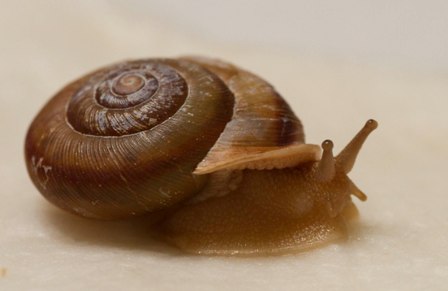The Adaptation of Hibernation
Walter C. Blinn was one researcher who worked a lot with Allogona
profunda (Say). Most of his work had to do with the autecology of the
snail, life history, and behaviors. From October 1958 to September 1960, he
studied these snails in Carle Woods, which is an oak-maple forest near
DesPlaines, Cook County, Illinois (Blinn, 1963).
After much examination, Blinn found that the hibernating epiphragm of
Allogona profunda (Say) is of the white calcareous type. Also, he found
that this snail has the aperture-upward orientation that many other snails
have as well during hibernation. However, unlike most snails, Allogona
profunda (Say) is rarely found buried in the ground, but they often lay
in slight natural depressions in the soil’s surface. Also, after
hibernation, these snails were found in exactly the same place as they were
examined in before (Blinn, 1963).
Allogona profunda (Say) also have a very lengthy hibernation
period. Blinn thought this suggested a diapause. A diapause is a phase of
rest in which metabolism is decreased. In addition, he found that once the
snails went through physiological preparation for hibernation has occurred,
they must remain dormant for a certain period of time before it can resume
normal activity. This period is around six months long. Blinn also conducted
an experiment in which he found that Allogona profunda (Say) can
endure an artificially prolonged hibernation of at least one year (Blinn,
1963).
Allogona profunda (Say) was found to perform an autumnal “homing” ritual to its winter quarters, where it will eventually settle in to hibernate. The type of land that the snails are attracted to is soil that is slightly depressed below the surrounding soil levels and thicker accumulation of leaves that had fallen in autumn. This environment was thought to have better temperature insulation for hibernating through the winter months since Allogona profunda (Say) does not bury itself (Blinn, 1963).
